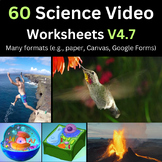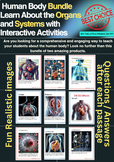62 results
Physics teacher manuals under $5
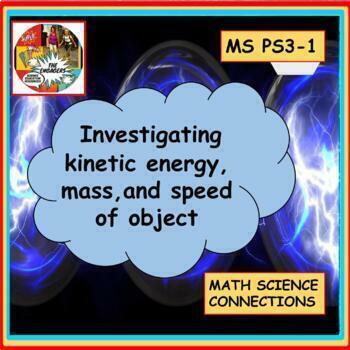
Kinetic energy, mass, and speed investigations NGSS MS PS3-1 CER
These two investigations (GOOGLE and PDF versions) allow students to develop an understanding of the relationship between kinetic energy and mass of an object, and kinetic energy and speed of an object. As students are collecting their own data, it is more understandable compared to being given data to analyze. This activity supports the NGSS standard MS PS3-1A review (or introduction) of some of the key terms such as mass, kinetic energy, speed, energy transformations, and conservation of energ
Subjects:
Grades:
6th - 9th
NGSS:
MS-PS3-1

Pinhole Camera: Light Rays and the Camera Obscura - no fail kit - basic science
in brief: STEM lab kit Build a pin hole camera & learn rules of geometrical optics. SIMPLE materials, no mess, 100% success!*What's Inside:1) printable students guide for building a working pinhole box2) extra slides with explanation (print or screen in class)3) question sheet and answer keylearning utilities and goals:Building manual with visual aidsDate collecting and manipulation: a structured inquiryLearning how to use geometric methods for tracing imagesIn some classes, I spiced the les
Subjects:
Grades:
6th - 10th
Types:
NGSS:
4-PS4-2
, 1-PS4-2
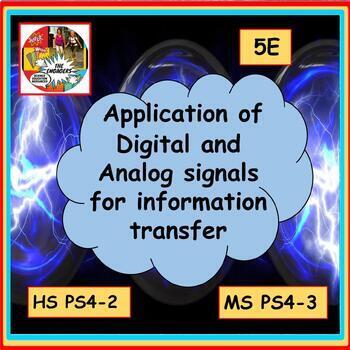
Application of Digital and Analog Signals for Information Transfer 5E MS-PS4-3
Students live in a digital world but the majority of them do not understand what that means. These engaging lessons (GOOGLE and PDF versions) allow students to develop a concrete understanding of the differences between analog and digital devices, and how analog text, sound, and images are converted to digital. This activity supports the NGSS standards MS PS4-3 and HS PS4-2These 5E lessons are launched with an anchor phenomenon which is revisited during the unit. A number of activities (shown b
Subjects:
Grades:
6th - 12th
NGSS:
HS-PS4-2
, MS-PS4-3
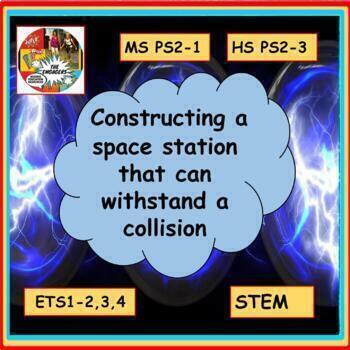
CONSTRUCTING A SPACE STATION THAT WITHSTANDS A COLLISION: STEM MS-PS2-1 HS-PS2-3
This highly engaging engineering and design project (GOOGLE and PDF versions) allows students to gain a greater understanding of why we need to build space stations that can withstand collisions.The students first learn about crumple zones and why they are helpful in a collision.Students design, construct, and test three crumple zones (made of simple materials) to see which is the best for attachment to their space station. A video showing student examples is included.Students then design, const
Subjects:
Grades:
6th - 12th
NGSS:
MS-ETS1-2
, MS-ETS1-4
, MS-ETS1-3
, MS-PS2-1
, HS-PS2-3
Also included in: Newton's Third Law Bundle NGSS MS PS2-1 STEM MS ETS1-2,3,4
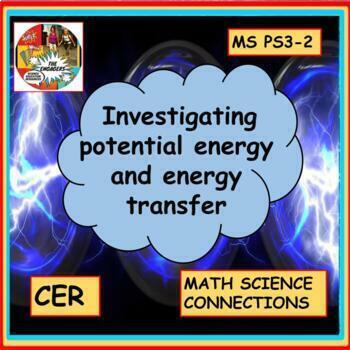
Investigating Potential Energy and Energy Transfer NGSS MS PS3-2 CER
These engaging lessons (GOOGLE and PDF versions) allow students to develop an understanding of the relationship between gravitational potential energy, the mass of an object, and the height of the object, and also how energy is transferred when two objects interact. This activity supports the NGSS standard MS PS3-2A review (or introduction) of the key terms kinetic energy, potential energy, the law of conservation of energy, the connection between force and energy, and mass is given.Students wil
Subjects:
Grades:
5th - 9th
NGSS:
MS-PS3-2

AP Chemistry 9.1 Intro to Entropy Guided Inquiry Investigation Teacher Guide
This is the teacher guide that accompanies a guided inquiry investigation for AP Chemistry standard 9.1 Intro to Entropy. Students use the statistical definition of entropy as the number of microstates that correspond to a particular macrostate. Students use several different statistical models to draw conclusions about the relationship between entropy, statistics, temperature, diffusion, and states of matter. Teacher notes and answers are written in red.
Subjects:
Grades:
9th - 12th
NGSS:
HS-PS3-4
Also included in: AP Chemistry 9.1 Intro to Entropy Guided Inquiry Investigation
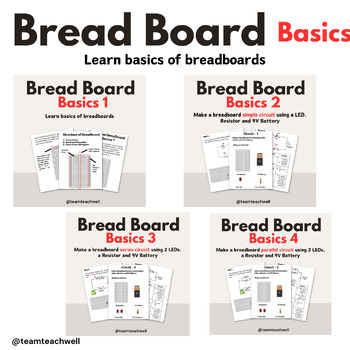
Breadboard Basics - Simple, Series & Parallel Circuit
This teaching resource is designed to help learners grasp the fundamentals of breadboards, a crucial tool in electronics prototyping. This resource covers following topics :What is Breadboard?Structure of BreadboardHow to Read Rows and Columns in Breadboard?How to Provide Power to Breadboard ?How to Make simple circuit on breadboard - Step by StepHow to Make series circuit on breadboard - Step by StepHow to Make parallel circuit on breadboard - Step by StepEquip your learners with a solid founda
Subjects:
Grades:
Not Grade Specific

Exploring the properties of the EM spectrum 5E NGSS MS PS4-2
These engaging lessons (GOOGLE and PDF versions) give students a concrete understanding of how the Electromagnetic spectrum (EM) is organized, and the properties and uses of each type of wave.These lessons support the NGSS standard MS PS4-2These lessons follow the 5E model: Engage - An engaging phenomenon is presented.Explore - Students determine the organization of the spectrum. Students identify some of the properties of radio waves, infrared light, ultraviolet light, and microwaves through f
Subjects:
Grades:
6th - 9th
NGSS:
MS-PS4-2
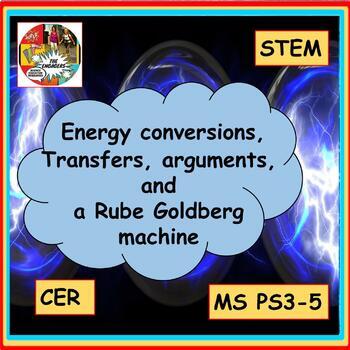
Energy conversions, transfers, arguments, and a Rube Goldberg machine CER STEM
These highly engaging lessons (GOOGLE and PDF versions) allow students to gain a greater understanding of energy conversions, kinetic energy transfer, and the application of energy conversions and energy transfer when building a Rube Goldberg machine.These lessons are launched with an anchor phenomenon which is revisited during the unit. Students initially learn about the difference between kinetic energy and potential energy, the law of conservation of energy, and the nine types of energy.Ener
Subjects:
Grades:
5th - 12th
NGSS:
MS-ETS1-2
, MS-ETS1-4
, MS-PS3-5
, MS-ETS1-3
, HS-PS3-3
Also included in: Energy Unit bundle NGSS aligned STEM CER

Exploring sound energy NGSS MS PS4-2 CER
These engaging lessons (GOOGLE and PDF versions) give students a concrete understanding of how we generate sounds, the frequencies that we can hear compared to different animals, the fact that sound waves need a medium to travel through, and the differences between sound traveling through solids, liquids, and gasses.These lessons support the NGSS standard MS PS4-2These lessons are launched with an anchor phenomenon which is revisited at the end of the unit. An explanation of the phenomenon is g
Subjects:
Grades:
5th - 9th
NGSS:
MS-PS4-2

Investigating connections between energy transfer, mass, material, & temperature
These highly engaging lessons (GOOGLE and PDF versions) will allow students to develop an understanding of the relationship between thermal energy transfer, the mass, the type of matter, and the change in the average kinetic energy of the matter as measured by the temperature. These lessons are launched with an anchor phenomenon which is revisited during the unit. A review (or introduction) of some of the key terms such as mass, kinetic energy, temperature, thermal energy, and heat is given.In
Subjects:
Grades:
6th - 10th
NGSS:
MS-PS3-4
Also included in: Energy Unit bundle NGSS aligned STEM CER
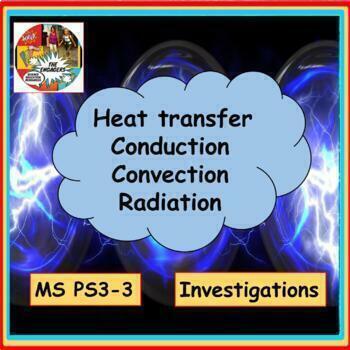
Heat transfer (conduction, convection, radiation) investigations NGSS MS PS3-3
These engaging lessons (GOOGLE and PDF versions) allow students to develop an understanding of how heat is transferred by conduction, convection, and radiation.These lessons are introduced with an anchor phenomenon which is revisited at the end of the unit. Common misconceptions about heat transfer are also addressed in these activities. This activity supports the NGSS standard MS PS3-3Optional slides are included for teachers planning to have students design a solar oven after this unit. Stude
Subjects:
Grades:
5th - 9th
NGSS:
MS-PS3-3
Also included in: Thermal energy, heat transfer, solar oven bundle STEM MS PS3-3
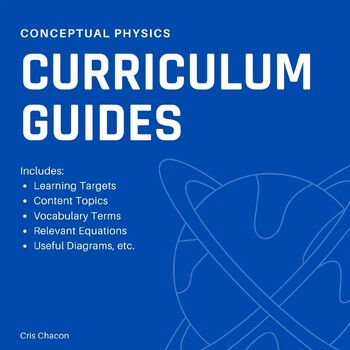
07.5 - Momentum Curriculum Guide
Each Curriculum Guide includes a Unit Overview document and a Student Self Assessment document. This is an excellent way to communicate to students what content will be covered in the unit, when it will be covered, and what learning targets they are expected to master.The Unit Overview contains the following:Front PageTopics coveredAssessments (with tentative dates that you can modify)Document Order/List (useful for conducting quick and efficient binder checks)Equations used in the unitBack Page
Subjects:
Grades:
8th - 11th
CCSS:
NGSS:
MS-ETS1-2
, MS-ETS1-4
, MS-ETS1-1
, MS-ETS1-3
Also included in: Momentum Unit Bundle
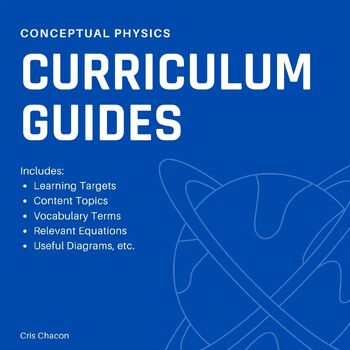
06.5 - Circular Motion Curriculum Guide
Each Curriculum Guide includes a Unit Overview document and a Student Self Assessment document. This is an excellent way to communicate to students what content will be covered in the unit, when it will be covered, and what learning targets they are expected to master.The Unit Overview contains the following:Front PageTopics coveredAssessments (with tentative dates that you can modify)Document Order/List (useful for conducting quick and efficient binder checks)Equations used in the unitBack Page
Subjects:
Grades:
8th - 11th
CCSS:
NGSS:
MS-ETS1-2
, MS-ETS1-4
, MS-ETS1-1
, MS-ETS1-3
Also included in: Circular Motion Unit Bundle

Physics Scope and Sequence / Curriculum Map
Need help knowing what to teach and when to teach it in your high school physics course? This resource has detailed everything you need to plan out the year at a glance! This scope and sequence is broken down into 4 phenomena, 7 units, and 30 topics. Within each topic there are detailed concepts that should be taught in that topic (including investigation questions). You will also see the NGSS standards that are covered within each topic. Throughout my scope and sequence I continuously try to pa
Subjects:
Grades:
9th - 12th
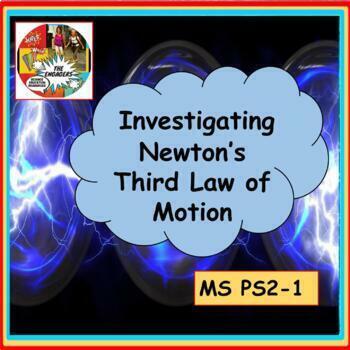
Investigating Newton's Third Law of Motion MS PS2-1
Students move through five stations that guide them to “discover” Newton’s third law (GOOGLE and PDF versions). Students then complete a summary worksheet where they identify the action and reaction involved for each station. Next they apply their knowledge of Newton’s third law to three new situations. This can be used as a formative assessment of student understanding.These activities support the NGSS standard MS PS2-1 Easily obtainable materials are used for these stations.Possible student re
Subjects:
Grades:
5th - 9th
NGSS:
MS-PS2-1
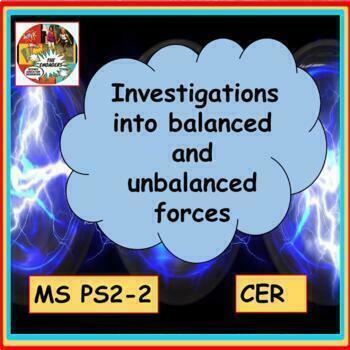
Investigations into balanced and unbalanced forces MS PS2-2 CER
These engaging stations (GOOGLE and PDF versions) allow students to start to construct their own understanding of unbalanced and balanced forces including answers to the following questions:What is a force?What is the strength of the unit Newton?How does a different force affect the same object?How does the same force affect objects with different masses?What is the difference between balanced and unbalanced forces?How do you calculate the net force?What causes objects to move? Station 6 will re
Subjects:
Grades:
5th - 9th
Types:
NGSS:
MS-PS2-2
Also included in: Force and Motion Unit Bundle NGSS ALIGNED STEM CER
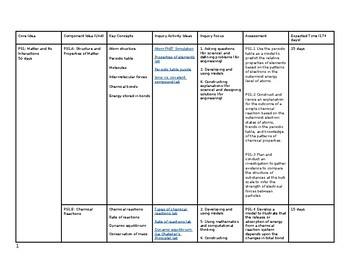
NGSS High Sch 9-12 Physical Sci/Physics/Chemistry Scope and Sequence w Lab Links
Scope and sequence for NGSS-aligned high school Physical Science (Chemistry and Physics) course, including standards (reproduced from NGSS), key concepts (interpreted from NGSS), inquiry activity ideas (suggestions and links), science and engineering practice standard focuses, assessment tasks (reproduced from NGSS), and estimated class time. This is an aggregation of standards, key concepts, and resources for a teacher or department chair ready to dive into unit planning and lesson planning.
Subjects:
Grades:
8th - 12th
NGSS:
HS-PS1-8
, HS-PS3-4
, HS-PS1-1
, HS-PS2-5
, HS-PS3-2
...

Arduino Introduction - Basics 1 (For beginners)
Arduino Basics - Introduction - Basic 1 (For beginners) Learn Arduino from scratch. Basic - 1 of Arduino Basics series includes :What is Arduino ?Parts of ArduinoFunctions of all partsLabelling of ArduinoPinout diagram of Arduino3 Worksheets with answer key. If you would like to learn Breadboard Basics. Check out My Breadboard Basics - Full Module.Love this resource? Follow my store to stay up to date with all my products!Let's Connect!InstagramPinterest
Subjects:
Grades:
Not Grade Specific
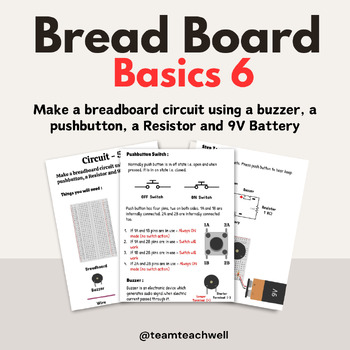
Make a breadboard circuit using a buzzer, a pushbutton, Resistor and 9V Battery
Step by Step tutorial to make a breadboard circuit using a buzzer, a pushbutton, a Resistor and 9V BatteryEquip your learners with a solid foundation in electronics with this comprehensive teaching resource on breadboards. Whether you're a teacher looking for classroom materials or a learner seeking a self-paced resource, this caters to all levels of expertise. Strengthen your grasp on electronics prototyping and circuit building with this invaluable teaching resource. Many more to come in this
Subjects:
Grades:
Not Grade Specific

Make a breadboard circuit using 1 LED, a pushbutton, a Resistor and 9V Battery
Step by Step tutorial to make a breadboard circuit using 1 LED, a pushbutton, a Resistor and 9V BatteryEquip your learners with a solid foundation in electronics with this comprehensive teaching resource on breadboards. Whether you're a teacher looking for classroom materials or a learner seeking a self-paced resource, this caters to all levels of expertise. Strengthen your grasp on electronics prototyping and circuit building with this invaluable teaching resource. Many more to come in this ser
Subjects:
Grades:
Higher Education
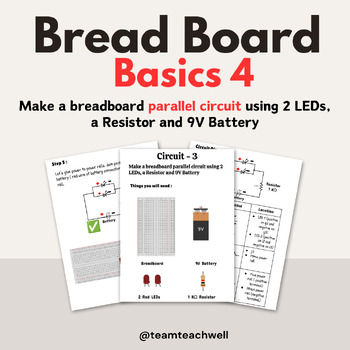
Make a breadboard parallel circuit using 2 LEDs, a Resistor and 9V Battery
Step by Step tutorial to make basic Breadboard parallel circuit.Equip your learners with a solid foundation in electronics with this comprehensive teaching resource on breadboards. Whether you're a teacher looking for classroom materials or a learner seeking a self-paced resource, this caters to all levels of expertise. Strengthen your grasp on electronics prototyping and circuit building with this invaluable teaching resource. Many more to come in this series.Love this resource? Follow my store
Subjects:
Grades:
Not Grade Specific
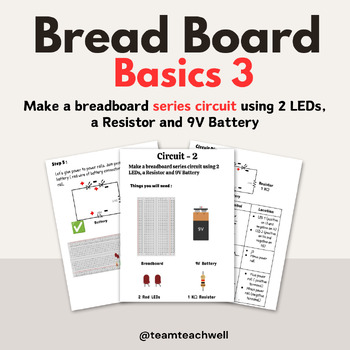
Make a breadboard series circuit using 2 LEDs, a Resistor and 9V Battery
Step by Step tutorial to make basic Breadboard series circuit.Equip your learners with a solid foundation in electronics with this comprehensive teaching resource on breadboards. Whether you're a teacher looking for classroom materials or a learner seeking a self-paced resource, this caters to all levels of expertise. Strengthen your grasp on electronics prototyping and circuit building with this invaluable teaching resource. Many more to come in this series.Love this resource? Follow my store t
Subjects:
Grades:
Not Grade Specific

Investigating Newton’s Second Law NGSS MS PS2-2 CER
These investigations (GOOGLE and PDF versions) allow students to develop an understanding of the relationship between mass, sum of the forces, and change of motion. As students are performing the investigations, the equation for Newton’s second law, when introduced, will be easily understandable. Instructions are given for both in class investigations and online investigations.This activity supports the NGSS standard MS PS2-2A review (or introduction) of the key terms mass, speed, velocity a
Subjects:
Grades:
5th - 9th
NGSS:
MS-PS2-2
Showing 1-24 of 62 results

